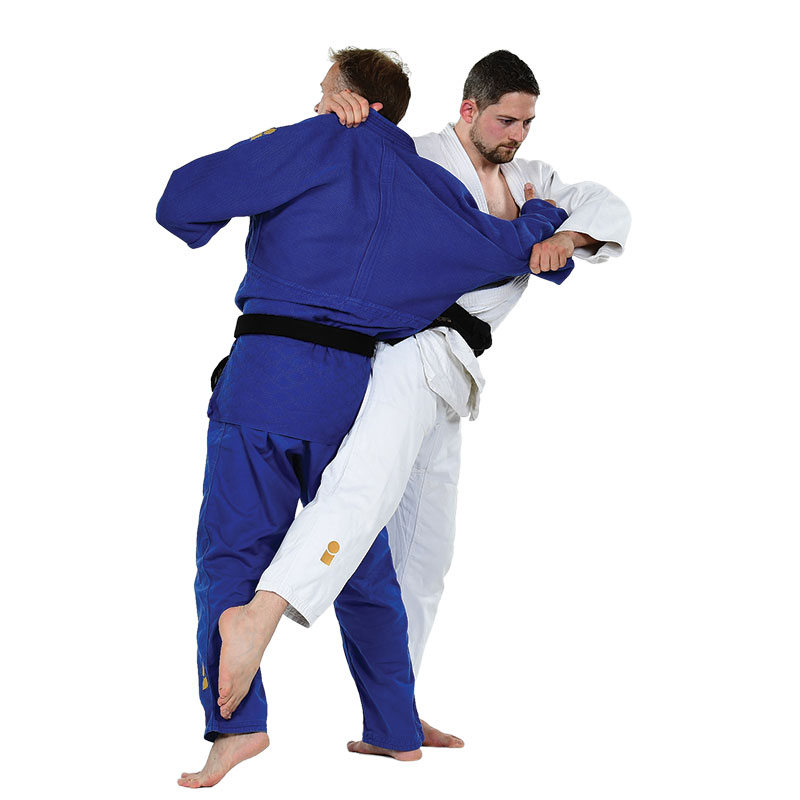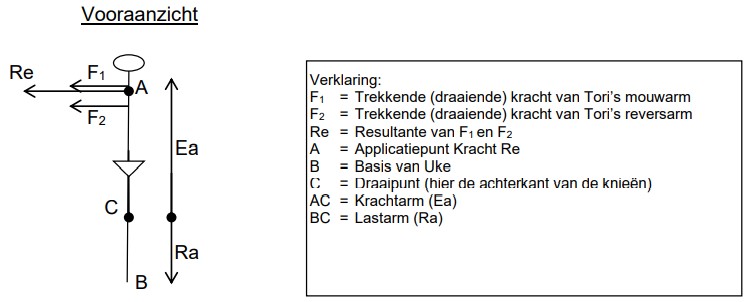O-soto-guruma 大外車
Major Outer Wheel
Classification: Ashi-waza (leg technique)
Japanese meaning:
-
Ō = large
-
Soto = outer
-
Guruma = wheel
Technical Description
O-soto-guruma is a powerful leg technique that closely resembles O-soto-gari, but with a key difference: instead of sweeping one leg, both of uke’s legs are swept, resulting in a dramatic backward fall.
Here’s how the throw works:
-
Tori breaks uke’s balance toward the rear corner.
-
Tori then rotates to the left and extends the right leg diagonally across the backs of both of uke’s knees, forming a blocking axis.
-
By sweeping uke’s legs while pushing or pulling with the upper body, uke is thrown backwards over tori’s thigh in a wide, arcing motion.
This dual-leg sweep results in uke falling as if over a spinning wheel — hence the “guruma” or wheel metaphor in the name.

Biomechanics of O-soto-guruma
This throw functions as a lever system (hefboomtechniek):
-
Pivot point (C): Tori’s leg blocks both knees of uke from behind, creating the axis of rotation.
-
Force application (F1 and F2): Tori’s arms and torso work in unison to push/pull uke over the blocking leg.
-
The upper body generates rotation, while the blocking leg eliminates uke’s base of support — making it nearly impossible for uke to resist the fall.
Unlike O-soto-gari, which uses a single-leg reap, O-soto-guruma targets both legs, making it particularly effective against opponents with a strong stance.

Did You Know?
O-soto-guruma is the first technique of the fifth group (Dai Gokyo) in the Gokyo no Waza, the classic judo syllabus compiled by Jigoro Kano in 1895.
The “guruma” (wheel) family of techniques often implies a sweeping or rotating motion with a fixed pivot point. O-soto-guruma is one of the clearest examples of this concept, illustrating Kano’s principle of maximum efficiency through intelligent movement.